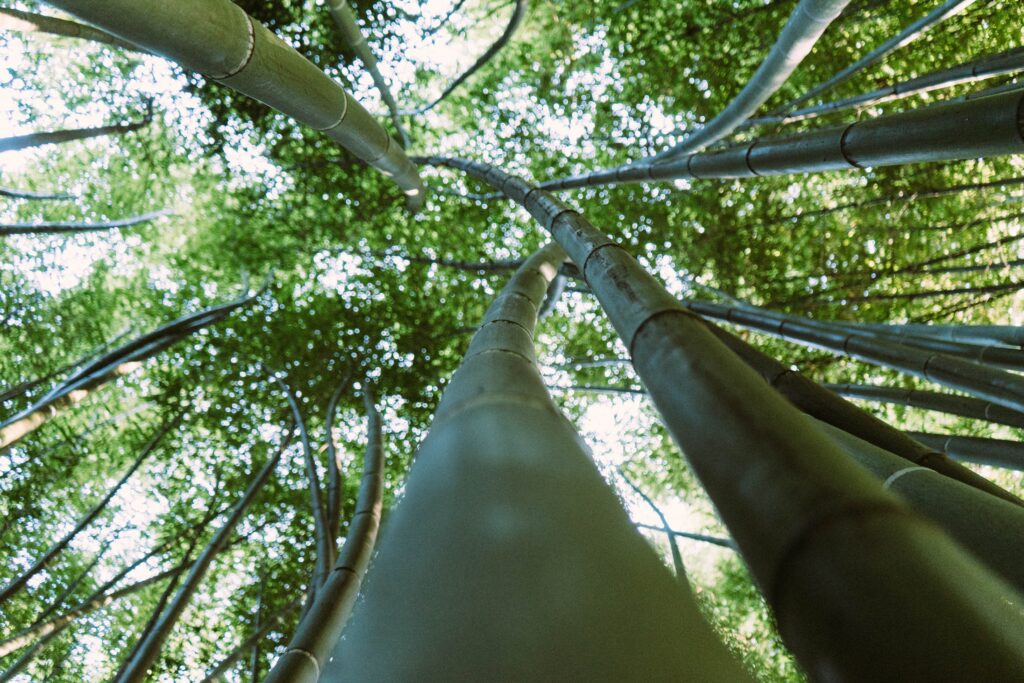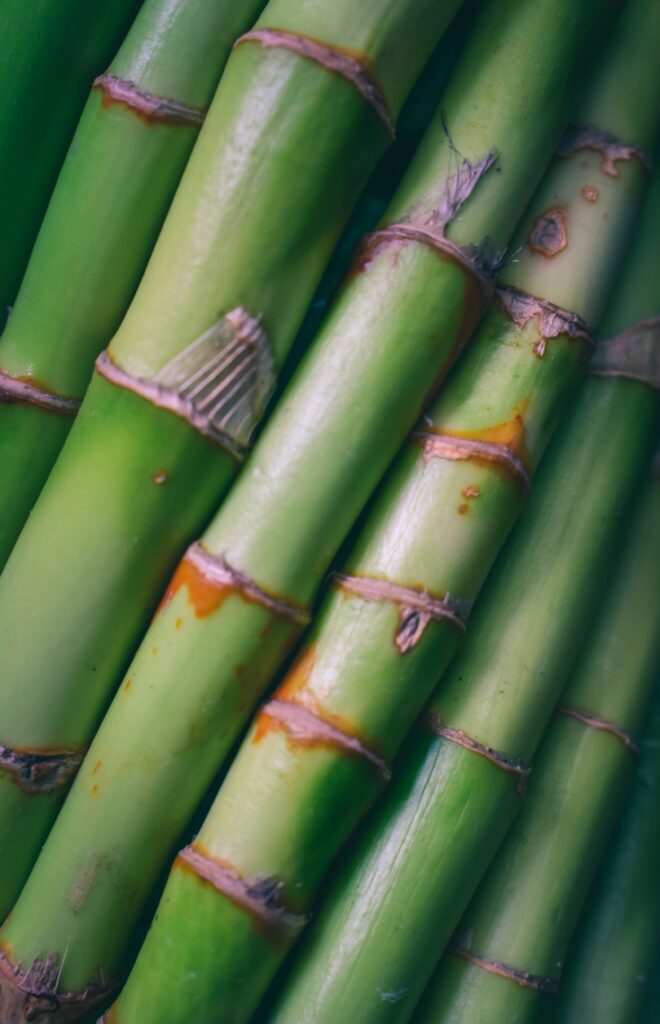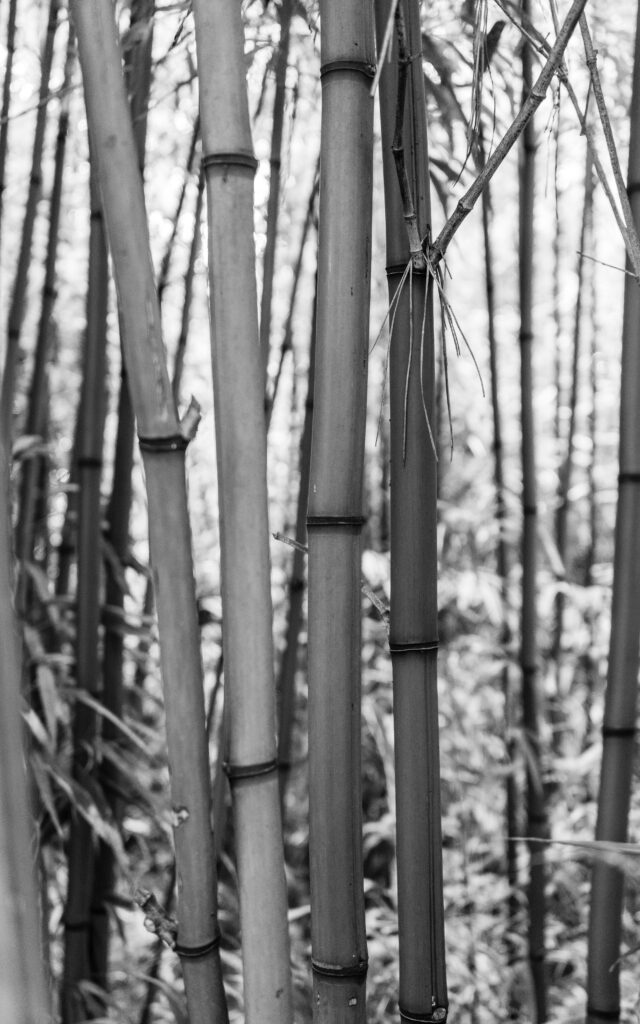THE BAMBOOS
bamboos are a group of plants of the Graminaceae family, a subfamily of Bambusoideae the same as corn, wheat and rice and which has about 1400 species and 100 genera; they are long “woody” grasses, with the highest growth rate in the world, in some cases they grow up to 60 cm per day and also adapt to temperate and cold climates. In fact, the bamboo forests in the world extend from the tropics to more temperate regions such as: China, Japan, the Himalayas, Europe, Latin America, Africa and the Far East.
Their height can vary from a few centimeters up to 40 meters and the diameter can reach 30 cm.
The range of shapes and colors is also varied and wide: yellow, black, striped, climbing and even thorny bamboo can be encountered. The Phyllostachys genus is certainly the most widespread and well-known in Italy, it is frequently confused with the Arundo donax, present throughout the peninsula along steep slopes and slopes.
The term Bamboo originates from the Malai language “Mambu” and was then translated into English with the better known name of Bamboo; its introduction in Italy is attributed to Prof. Orazio Fenzi, a Tuscan botanist in 1884.
Properties
Thanks to its remarkable and perennial leaf surface it is able to absorb high quantities of carbon dioxide; with its roots, bamboo transforms air and soil pollution into biomass; it is resistant to the attack of usual diseases for other grasses and therefore does not require special care and attention; bamboo plants are considered an excellent economic and eco-sustainable strategy for the management of organic animal waste, as they are able to keep the waters of rivers and lakes clean.
They have an excellent ability to retain water, thanks to which it prevents the washout of the soil thus avoiding, in case of heavy rain, dangerous swelling of streams and rivers, the same capacity serves the same plant to resist any drought periods or less long; it is very resistant to fires, since in its green state it is hardly combustible it is able to regenerate new rods every year; finally, it is an excellent natural barrier against dust and noise.


uses The European market has enhanced the ornamental aspect of the plant
focusing more on the aesthetic aspect than on other equally important characteristics: bamboo is in fact used in the East for the production of wood and food shoots. Therefore, in addition to being a plant with multiple qualities and advantages for nature, it is to be considered a “superfood” in fact its sprouts are rich in nutrients from B vitamins to minerals such as manganese, copper, potassium and silica.
A cultivated bamboo shoot gives rise to a 20 meter high cane in a few weeks, it is mostly used in Asian cuisine. In addition to this, the use of bamboo in sustainable construction is equally important, it can be used to create entire buildings; it is used to make casings, floors (parquet) and ceilings; the barrel is used for pillars, beams, floors and as a piece of furniture. The plant, in the initial phase of growth, is suitable for making fabrics and upholstery. In the American market it is widely used for the production of sheets, curtains, but also pajamas, bathrobes. The use in diaper inserts should also be considered, given the antibacterial and natural characteristics of bamboo.
Furthermore, the core of the plant (called Culmo) is obviously considered the most important part for its multiple uses. In addition to being an excellent fuel for ovens or stoves, especially for the start-up phases (bamboo has a very high calorific value), with it you can create various types of structures: parts of buildings, scaffolding for them, mats, various items braided, musical instruments, furniture. The thicker and heavier base of the culm is ideal for producing charcoal.
Cultivation The soil must be fertile, irrigated and plowed constantly
The production arrives in the fifth year, but already in the third year some sprouts begin to be harvested in the plantations that are better maintained through better techniques and fertilizations. What is very often underestimated is the cost of labor, as bamboo is not planted and then harvested once it has matured like other plant species. Therefore, you have to mark every single cane and wait three to five years for the collection and the labor cost is high because it is necessary to examine every single cane in the collection phase.
During the spring and summer it is important that the bamboo is watered abundantly a few times a month, during the autumn only once and in the colder months none. At the beginning of spring and mid-summer it is also necessary to fertilize the soil with a product very rich in nitrogen; while, during the winter it is essential to prepare a solution with pine needles to protect the roots from moisture. Once planted it is only necessary to take care of the cultivation, the cost of the bamboo plantation is estimated between €10,000 and €20,000, while the price of 1 kg of fresh shoots is around €15.
Its harvest takes place after the summer. On the other hand, its flowering is very slow, as there are some species of bamboo that bloom only after a hundred years, and many bamboos die after this phase due to the stress that flowering causes to the plant. The term Bamboo originates from the Malai language “Mambu” and was then translated into English with the more famous name of Bamboo; its introduction in Italy is attributed to Prof. Orazio Fenzi, a Tuscan botanist in 1884.

